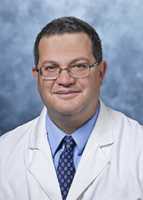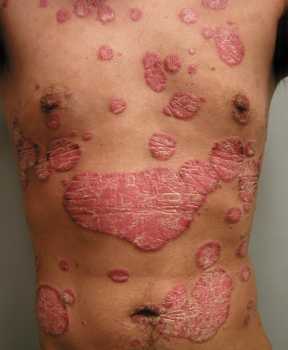Anesthesiology, Author Interviews, JAMA, Pediatrics, Surgical Research / 08.11.2018
No Detectable Developmental Issues in Children Exposed to Anesthesia and Surgery
MedicalResearch.com Interview with:
 James D. O’Leary, MD
Department of Anesthesia and Pain Medicine,
Child Health Evaluative Sciences
The Hospital for Sick Children
Department of Anesthesia, University of Toronto
Toronto, Ontario, Canada
MedicalResearch.com: What is the background for this study? What are the main findings?
Response: There is substantial evidence from laboratory studies that the developing brain is susceptible to injury from general anesthetic drugs, which culminated in the US Food Drug Administration issuing a safety communication in 2017 stating that the use of general anaesthetic drugs “for lengthy periods of time or over multiple surgeries or procedures may negatively affect brain development in children younger than 3 years”. Considering the substantial number of children who require general anesthesia every year (almost 3 million in the US annually) even small differences in child development outcomes after surgical procedures that require general anesthesia may have significant public health implications.
Undertaking studies of anesthesia-related neurotoxicity in humans is difficult as adverse child development is a function of the complex interaction between many risk and protective factors. By examining differences between biological siblings in Ontario, Canada, this study seeks to mitigate differences in risk from biological vulnerability and environmental factors, to provide a more accurate estimate of the adverse effects of anesthesia and surgery on child development.
In the current study, young children who had surgical procedures that require general anesthesia were not found to be at increased risk of adverse child development outcomes compared to their biological siblings who did not have surgery. These findings further support that exposure to anesthesia and surgery in early childhood is not associated with detectable adverse child development outcomes. (more…)
James D. O’Leary, MD
Department of Anesthesia and Pain Medicine,
Child Health Evaluative Sciences
The Hospital for Sick Children
Department of Anesthesia, University of Toronto
Toronto, Ontario, Canada
MedicalResearch.com: What is the background for this study? What are the main findings?
Response: There is substantial evidence from laboratory studies that the developing brain is susceptible to injury from general anesthetic drugs, which culminated in the US Food Drug Administration issuing a safety communication in 2017 stating that the use of general anaesthetic drugs “for lengthy periods of time or over multiple surgeries or procedures may negatively affect brain development in children younger than 3 years”. Considering the substantial number of children who require general anesthesia every year (almost 3 million in the US annually) even small differences in child development outcomes after surgical procedures that require general anesthesia may have significant public health implications.
Undertaking studies of anesthesia-related neurotoxicity in humans is difficult as adverse child development is a function of the complex interaction between many risk and protective factors. By examining differences between biological siblings in Ontario, Canada, this study seeks to mitigate differences in risk from biological vulnerability and environmental factors, to provide a more accurate estimate of the adverse effects of anesthesia and surgery on child development.
In the current study, young children who had surgical procedures that require general anesthesia were not found to be at increased risk of adverse child development outcomes compared to their biological siblings who did not have surgery. These findings further support that exposure to anesthesia and surgery in early childhood is not associated with detectable adverse child development outcomes. (more…)
 James D. O’Leary, MD
Department of Anesthesia and Pain Medicine,
Child Health Evaluative Sciences
The Hospital for Sick Children
Department of Anesthesia, University of Toronto
Toronto, Ontario, Canada
MedicalResearch.com: What is the background for this study? What are the main findings?
Response: There is substantial evidence from laboratory studies that the developing brain is susceptible to injury from general anesthetic drugs, which culminated in the US Food Drug Administration issuing a safety communication in 2017 stating that the use of general anaesthetic drugs “for lengthy periods of time or over multiple surgeries or procedures may negatively affect brain development in children younger than 3 years”. Considering the substantial number of children who require general anesthesia every year (almost 3 million in the US annually) even small differences in child development outcomes after surgical procedures that require general anesthesia may have significant public health implications.
Undertaking studies of anesthesia-related neurotoxicity in humans is difficult as adverse child development is a function of the complex interaction between many risk and protective factors. By examining differences between biological siblings in Ontario, Canada, this study seeks to mitigate differences in risk from biological vulnerability and environmental factors, to provide a more accurate estimate of the adverse effects of anesthesia and surgery on child development.
In the current study, young children who had surgical procedures that require general anesthesia were not found to be at increased risk of adverse child development outcomes compared to their biological siblings who did not have surgery. These findings further support that exposure to anesthesia and surgery in early childhood is not associated with detectable adverse child development outcomes. (more…)
James D. O’Leary, MD
Department of Anesthesia and Pain Medicine,
Child Health Evaluative Sciences
The Hospital for Sick Children
Department of Anesthesia, University of Toronto
Toronto, Ontario, Canada
MedicalResearch.com: What is the background for this study? What are the main findings?
Response: There is substantial evidence from laboratory studies that the developing brain is susceptible to injury from general anesthetic drugs, which culminated in the US Food Drug Administration issuing a safety communication in 2017 stating that the use of general anaesthetic drugs “for lengthy periods of time or over multiple surgeries or procedures may negatively affect brain development in children younger than 3 years”. Considering the substantial number of children who require general anesthesia every year (almost 3 million in the US annually) even small differences in child development outcomes after surgical procedures that require general anesthesia may have significant public health implications.
Undertaking studies of anesthesia-related neurotoxicity in humans is difficult as adverse child development is a function of the complex interaction between many risk and protective factors. By examining differences between biological siblings in Ontario, Canada, this study seeks to mitigate differences in risk from biological vulnerability and environmental factors, to provide a more accurate estimate of the adverse effects of anesthesia and surgery on child development.
In the current study, young children who had surgical procedures that require general anesthesia were not found to be at increased risk of adverse child development outcomes compared to their biological siblings who did not have surgery. These findings further support that exposure to anesthesia and surgery in early childhood is not associated with detectable adverse child development outcomes. (more…)
















 Faiz Gani, PhD
Postdoctoral research fellow
Department of Surgery
Johns Hopkins University School of Medicine
MedicalResearch.com: What is the background for this study? What are the main findings?
Response: Firearm related injuries are a leading cause of injury and death in the United States, yet, due to combination of factors, limited data exist that evaluate these injuries, particularly among younger patients (patients younger than 18 years).
The objective of this study was to describe emergency department utilization for firearm related injuries and to quantitate the financial burden associated with these injuries.
In our study of over 75,000 emergency department visits, we observed that each year, over 8,300 children and adolescents present to the emergency department for the treatment / management of a gunshot injury. Within this sub-population of patients, we observed that these injuries are most frequent among patients aged 15-17 years and while these injuries decreased over time initially, were observed to increase again towards the end of the time period studied.
In addition to describing the clinical burden of these injuries, we also sought to describe the financial burden associated with these injuries. For patients discharged from the emergency department, the average (median) charge associated with their care was $2,445, while for patients admitted as inpatients for further care, the average (median) charge was $44,966.
Collectively these injuries resulted in $2.5 billion in emergency department and hospital charges over the time period studied. This translates to an annual financial burden of approximately $270 million.
Faiz Gani, PhD
Postdoctoral research fellow
Department of Surgery
Johns Hopkins University School of Medicine
MedicalResearch.com: What is the background for this study? What are the main findings?
Response: Firearm related injuries are a leading cause of injury and death in the United States, yet, due to combination of factors, limited data exist that evaluate these injuries, particularly among younger patients (patients younger than 18 years).
The objective of this study was to describe emergency department utilization for firearm related injuries and to quantitate the financial burden associated with these injuries.
In our study of over 75,000 emergency department visits, we observed that each year, over 8,300 children and adolescents present to the emergency department for the treatment / management of a gunshot injury. Within this sub-population of patients, we observed that these injuries are most frequent among patients aged 15-17 years and while these injuries decreased over time initially, were observed to increase again towards the end of the time period studied.
In addition to describing the clinical burden of these injuries, we also sought to describe the financial burden associated with these injuries. For patients discharged from the emergency department, the average (median) charge associated with their care was $2,445, while for patients admitted as inpatients for further care, the average (median) charge was $44,966.
Collectively these injuries resulted in $2.5 billion in emergency department and hospital charges over the time period studied. This translates to an annual financial burden of approximately $270 million. 









